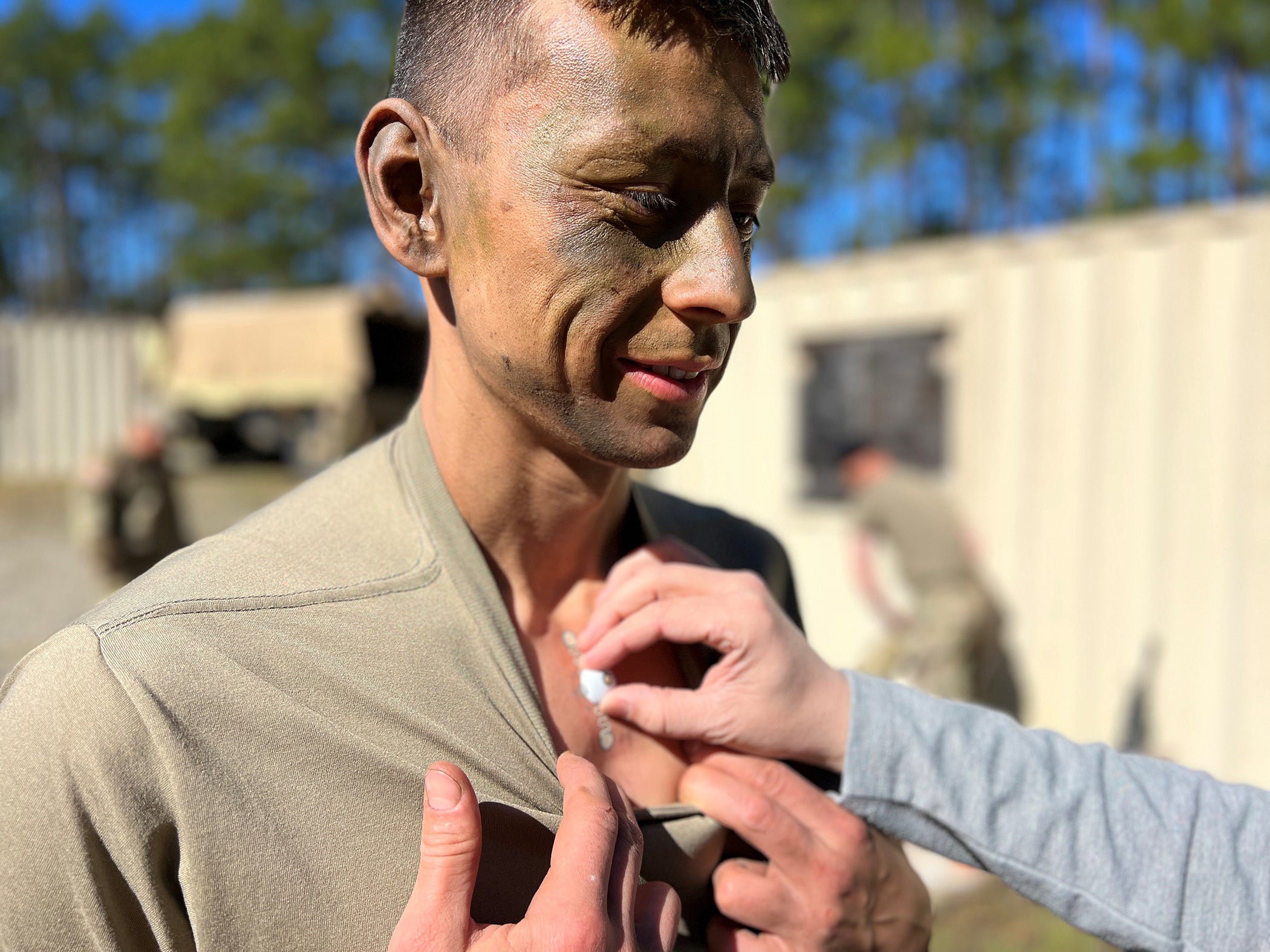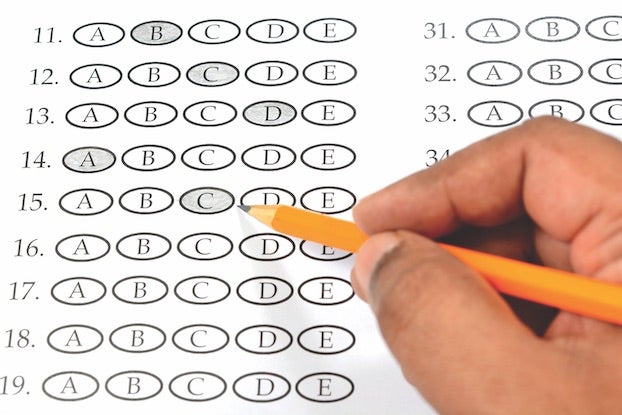Technology, safety go hand-in-hand at 2023 Army Best Medic Competition
Published 8:40 am Friday, February 3, 2023

- 1st Lt. Ilnur Sibagatulin, representing Medical Readiness Command, West wore the Health Readiness and Performance System during the U.S. Army Best Medic Competition Jan. 22-25 at the Joint Readiness Training Center and Fort Polk. Sibagatulin, a U.S. Army Nurse Corps officer, is assigned to Weed Army Community Hospital, Fort Irwin, Calif. (Special to the Leesville Leader)
By Jean Clavette Graves | Special to the Leesville Leader
FORT POLK — Bayne-Jones Army Community Hospital planned, coordinated and executed the 2023 Command Sgt. Maj. Jack L. Clark U.S. Army Best Medic Competition at the Joint Readiness Training Center and Fort Polk Jan. 22-25.
During the competition, the U.S. Army Medical Research and Development Command participated in more than one way.
In addition to having a team competing for the Best Medic title, they had another team supporting the competition with the Health Readiness and Performance System.
Command Sgt. Maj. Timothy J. Sprunger, medical readiness command, west, wanted to use HRAPS after learning about it at an exercise last year at Fort Irwin, Calif.
“It’s usually worn on your chest, and it picks up your heart rate, core body temperature, activity level and location,” Sprunger said. “I thought it would be a great addition to the Army Best Medic Competition because not only does it monitor specific health data, but it also allows us to track the geographical locations of each competitor.”
Sprunger said seeing the biometric data and location of contestants in real time was useful during the competition.
“This technology allowed us to view each person, their heart rate and activity levels during each lane of the competition,” Sprunger said. “We can use that information to examine the physical demands on competitors to help with the planning process for next year.”
There are countless opportunities for this type of technology.
“I can see this being used in future iterations of best medic, best leader and best squad competitions,” Sprunger said. “The data provided in real time is valuable for the health and safety of our competitors. By monitoring their heart rate and core temperature we can intervene if a contestant is in distress or about to go into distress.”
Emily Krohn, assistant product manager with the U.S. Army Medical Materiel Development Activity’s Warfighter Health, Performance and Evacuation Project Management Office, was on site in the tactical command post for the entire competition.
HRAPS is a Defense Health Agency advanced effort currently in development at USAMMDA.
“The goal of HRAPS is to provide real-time health and performance monitoring on warfighters, both in high-risk training events and real-world operations,” Krohn said.
The primary purpose of HRAPS is for injury prevention and situational awareness of a warfighter’s general physical state.
“In an operational environment there is no way to tell what a Soldier’s core body temperature is until it’s potentially too late,” she said. “Each year there are a high number of heat casualties in the training environment, so the primary focus of HRAPS is safety and minimizing preventable injuries.”
Krohn said for the Best Medic Competition they were primarily focused on body temperature and location.
“There are a lot of preventable things we are trying to help leaders manage, things like lack of sleep and heat injuries,” she said. “We are also looking at future capabilities and applications to reduce musculoskeletal injuries and provide early warning of infections.”
Staff Sgt. Cameron Joyner, a combat medic assigned BJACH on Fort Polk, is the senior medic for the Army Best Medic Competition. He said HRAPS has been a useful tool for him and the medical support personnel.
“At one point in the competition we noticed a competitor had an elevated body temperature and was moving around on the GPS in a weird fashion. We took that information, located the individual and checked him out. He was perfectly fine, but if it was something, we could have prevented it before it became life threatening,” Joyner said.
Joyner said HRAPS is a good tool he hopes to see in wider use in the Army one day.
“This technology would be very helpful with our jobs,” Joyner said. “Often, there is only one medic assigned to a platoon of 30 people. This system would be invaluable if fielded in the Army. You can’t always see everyone at once. It would be helpful with monitoring, management and care of patients, allowing us to catch problems a little sooner.”
This technology may one day help medics on the battlefield.
“It will allow a medic to quickly pull and monitor vital signs by scanning a wearable device versus trying to do it manually in the dark or under extreme conditions,” Sprunger said. “A wearable device like this could potentially assist medics in a prolonged casualty care situation to monitor trends and potentially pass along important health information to the next level of care. The possibilities as a record and continuity of care are limitless.”





